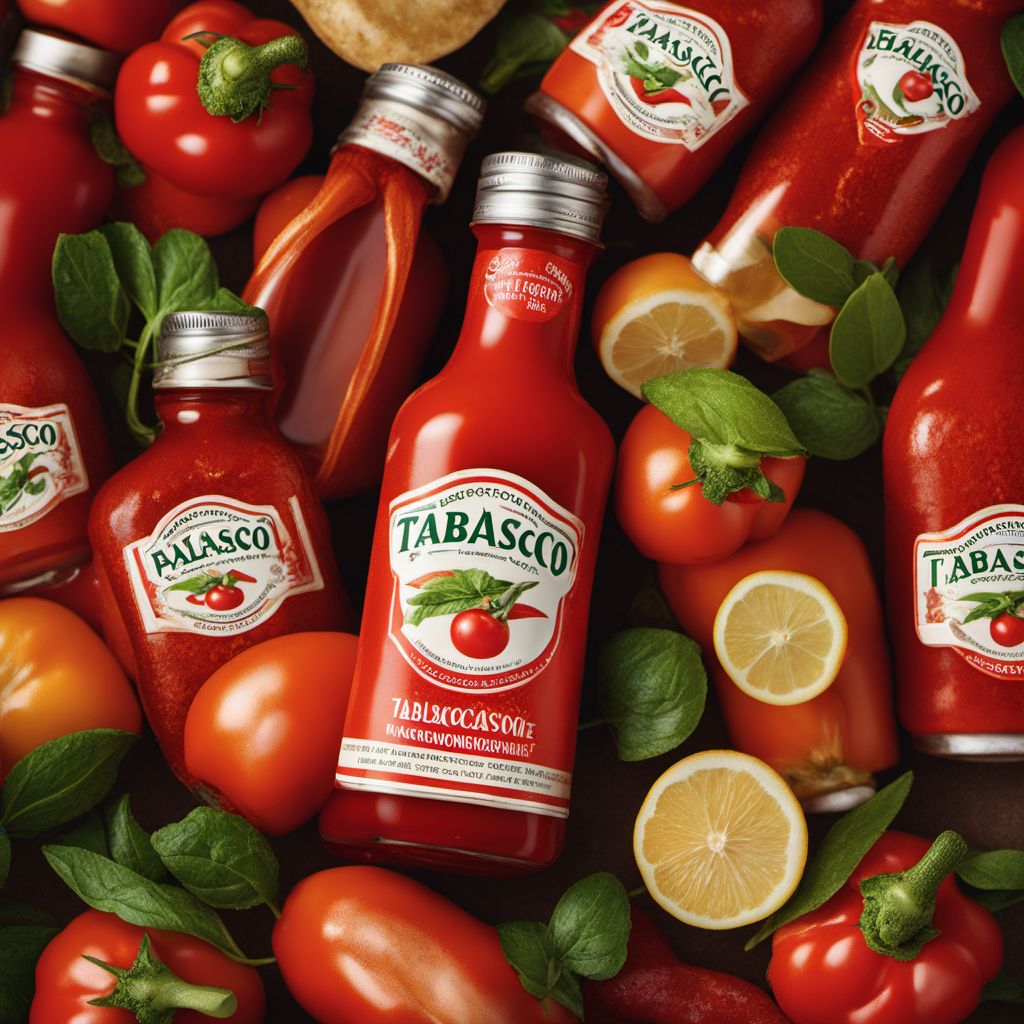
Ingredient
Tabasco sauce
"Fiery Elixir: Unleashing the Bold Flavors of Tabasco Sauce"
Tabasco sauce is a vibrant red liquid made from aged red peppers, vinegar, and salt. It boasts a pungent aroma and a bold, spicy taste that can range from mildly tangy to intensely hot, depending on the variety. The sauce has a thin consistency, allowing it to be easily drizzled or added to recipes. Its bright red color adds visual appeal to dishes, while its heat level can be adjusted by using more or less of the sauce.
Origins and history
Tabasco sauce traces its roots back to Avery Island, Louisiana, where it was first produced by Edmund McIlhenny in the mid-1800s. The McIlhenny family has continued to produce the sauce using the same recipe for over 150 years. Tabasco sauce gained popularity worldwide and became an iconic American condiment, known for its unique flavor and heat.
Nutritional information
Tabasco sauce is low in calories, with approximately 0-5 calories per teaspoon. It contains negligible amounts of fat, cholesterol, and carbohydrates. While it is not a significant source of vitamins or minerals, it adds flavor to meals without adding excessive calories.
Allergens
Tabasco sauce does not contain any known allergens, making it suitable for individuals with common food allergies.
How to select
When selecting Tabasco sauce, look for bottles with intact seals and check the expiration date to ensure freshness. Additionally, consider opting for the original Tabasco sauce for its authentic flavor, or explore different varieties such as Chipotle or Habanero for a smoky or extra-spicy twist.
Storage recommendations
To maintain the freshness and quality of Tabasco sauce, store it in a cool, dry place away from direct sunlight. Once opened, it can be stored at room temperature for up to three years without significant loss of flavor or quality.
How to produce
While it is challenging to produce Tabasco sauce at home due to the specific aging and fermentation processes involved, adventurous individuals can try growing their own Tabasco peppers and experimenting with homemade hot sauce recipes.
Preparation tips
Tabasco sauce can be used as a condiment to enhance the flavor of various dishes. Add a few drops to soups, stews, marinades, or dressings to give them a spicy kick. It can also be used as a dipping sauce for appetizers or drizzled over grilled meats, seafood, or vegetables for an extra burst of flavor. Remember to start with a small amount and adjust according to personal taste preferences.
Substitutions
Suitable substitutes for Tabasco sauce include other hot sauces like Sriracha, Frank's RedHot, or Cholula. Each of these alternatives offers a unique flavor profile and heat level, allowing for customization based on personal preference.
Culinary uses
Tabasco sauce is a versatile ingredient used in a wide range of culinary applications. It is commonly used to spice up dishes such as chili, tacos, eggs, burgers, and Bloody Mary cocktails. It can also be added to sauces, dips, and marinades to add a zesty kick.
Availability
Tabasco sauce is widely available in grocery stores, supermarkets, and online retailers worldwide. It can be found in the condiment aisle or the international foods section.
More ingredients from this category
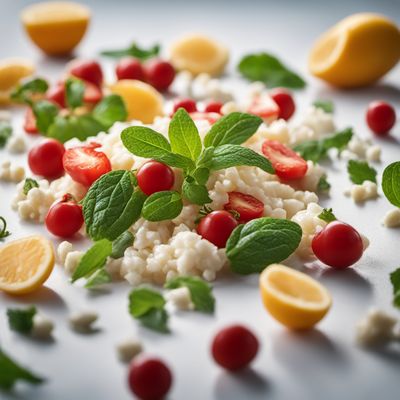
Tzatziki
Cool and Creamy: Discovering the Refreshing Delights of Tzatziki
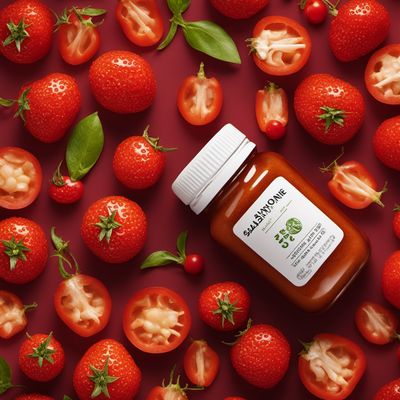
Salsa
The Zesty Dip
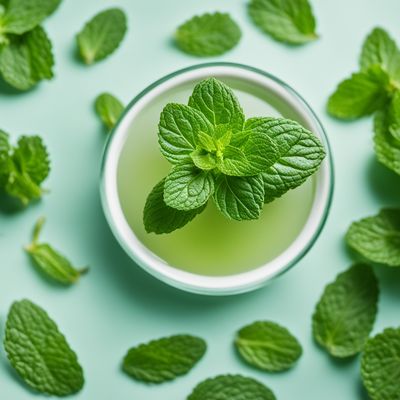
Mint sauce
"Refreshing Twist: Exploring the Delights of Mint Sauce"

Curry sauce
The Aromatic Blend of Spices
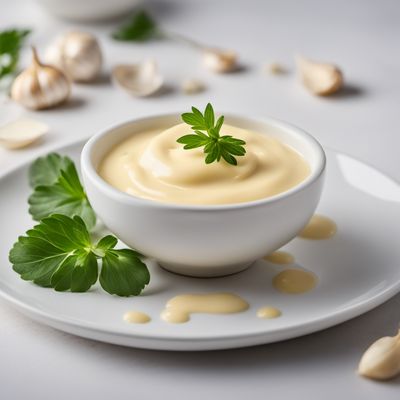
Aioli or garlic sauce
The Creamy Delight: Aioli or Garlic Sauce
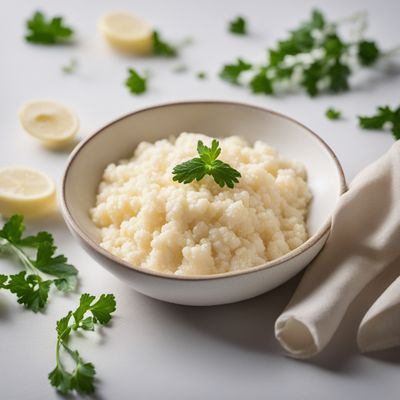
Horseradish sauce
The Fiery Elixir: Unleashing the Heat of Horseradish

Pesto
The Green Elixir

Herbs, vegetables and oil sauces
The Essence of Freshness and Flavor
Recipes using Tabasco sauce » Browse all

Veracruz-style Stuffed Naan
Exquisite Fusion: Veracruz-inspired Stuffed Naan Delight

Latin American Style Gyros
Sabor Latino Gyros: A Fusion of Greek and Latin American Flavors

West African-inspired Crispy Pancakes
Savory Delights: West African Crispy Pancakes with a Twist

Ivorian Spiced Beef Stew
Savory West African Beef Delight
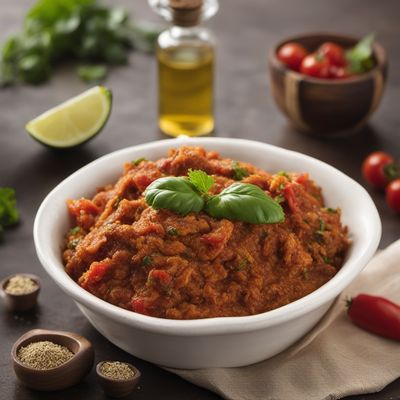
Stracci di Antrodoco with a Dominican Twist
Dominican Stracci: A Flavorful Fusion of Italian and Caribbean Delights

Congolese-style Tadka Lentils
Savory Congolese Lentil Delight

Mexican-Inspired Pho
Mexican Fiesta Pho: A Spicy Twist on a Vietnamese Classic

Latin American Sushi Rolls
Samba Sushi: A Fusion of Japanese and Latin American Flavors

Fast Food Pierogi
Quick and Delicious Pierogi Bites

Central African Spiced Beef Sandwich
Savory Spice Delight: Central African Spiced Beef Sandwich

Indian Chinese Style Crispy Rusk
Spicy Crunchy Delight: Indian Chinese Style Crispy Rusk

Nasi Goreng Adapted to Brazilian Cuisine
Brazilian-inspired Fried Rice: A Fusion of Flavors